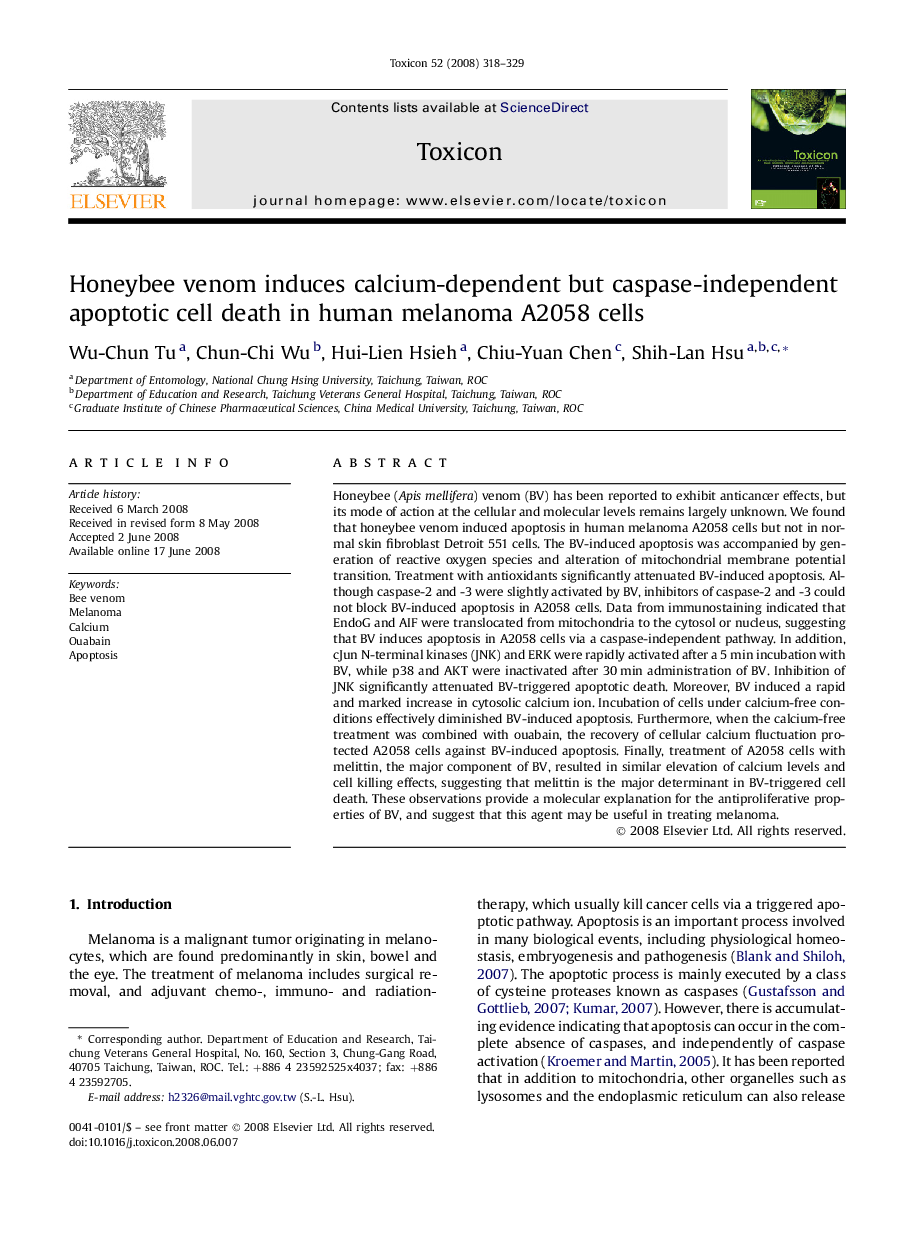| کد مقاله | کد نشریه | سال انتشار | مقاله انگلیسی | نسخه تمام متن |
|---|---|---|---|---|
| 2066566 | 1077240 | 2008 | 12 صفحه PDF | دانلود رایگان |

Honeybee (Apis mellifera) venom (BV) has been reported to exhibit anticancer effects, but its mode of action at the cellular and molecular levels remains largely unknown. We found that honeybee venom induced apoptosis in human melanoma A2058 cells but not in normal skin fibroblast Detroit 551 cells. The BV-induced apoptosis was accompanied by generation of reactive oxygen species and alteration of mitochondrial membrane potential transition. Treatment with antioxidants significantly attenuated BV-induced apoptosis. Although caspase-2 and -3 were slightly activated by BV, inhibitors of caspase-2 and -3 could not block BV-induced apoptosis in A2058 cells. Data from immunostaining indicated that EndoG and AIF were translocated from mitochondria to the cytosol or nucleus, suggesting that BV induces apoptosis in A2058 cells via a caspase-independent pathway. In addition, cJun N-terminal kinases (JNK) and ERK were rapidly activated after a 5 min incubation with BV, while p38 and AKT were inactivated after 30 min administration of BV. Inhibition of JNK significantly attenuated BV-triggered apoptotic death. Moreover, BV induced a rapid and marked increase in cytosolic calcium ion. Incubation of cells under calcium-free conditions effectively diminished BV-induced apoptosis. Furthermore, when the calcium-free treatment was combined with ouabain, the recovery of cellular calcium fluctuation protected A2058 cells against BV-induced apoptosis. Finally, treatment of A2058 cells with melittin, the major component of BV, resulted in similar elevation of calcium levels and cell killing effects, suggesting that melittin is the major determinant in BV-triggered cell death. These observations provide a molecular explanation for the antiproliferative properties of BV, and suggest that this agent may be useful in treating melanoma.
Journal: Toxicon - Volume 52, Issue 2, 1 August 2008, Pages 318–329